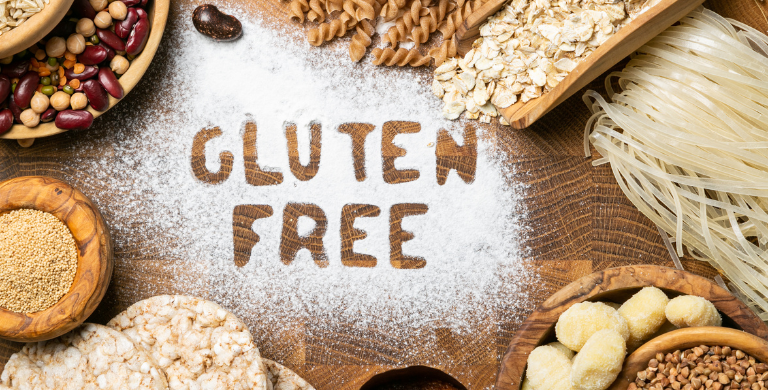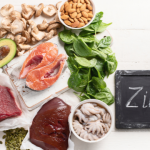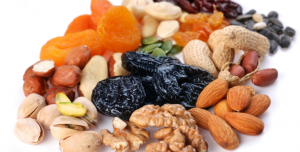Embarking on a gluten-free diet can feel overwhelming, especially if you’re new to it. Whether you’re making this change due to a medical condition like celiac disease or gluten sensitivity or simply as a lifestyle choice, understanding the basics can make the transition smoother. This guide will help you navigate the ins and outs of a gluten-free diet, offering practical tips and advice to ensure you stay healthy and satisfied.
For some, this lifestyle may feel like going against the grain; others wouldn’t have it any other way. Most especially when they are at risk of experiencing the discomfort of the consequences, do they see value in following a gluten-free lifestyle?
What is gluten?
Gluten is a protein found in wheat, barley, and rye. It provides elasticity to dough, helping it rise and maintain its shape. However, for some people, gluten can cause adverse health effects.
Who needs a gluten-free diet?
- Celiac disease: An autoimmune disorder where gluten triggers an immune response that damages the small intestine lining.
- Non-celiac gluten sensitivity: Individuals who experience symptoms similar to celiac disease but without the immune response.
- Wheat allergy: An allergic reaction to proteins found in wheat, including but not limited to gluten.
Getting started with a gluten-free diet.
Educate yourself:
Understanding which foods contain gluten is the first step. Common gluten-containing foods include:
- Breads, pastas, and cereals
- Baked goods
- Beer and some alcoholic beverages
- Sauces, dressings, and condiments that may use wheat as a thickener
Reading labels:
Become a diligent label reader. Look for terms like “wheat,” “barley,” “rye,” and “malt.” The FDA requires that packaged foods labelled “gluten-free” contain less than 20 parts per million of gluten, a safe level for most individuals with celiac disease.
Plan your meals:
Planning meals ahead of time helps ensure you have gluten-free options available and reduces the risk of accidental gluten consumption. Focus on naturally gluten-free foods such as:
- Fruits and vegetables
- Meat, poultry, and fish
- Dairy products
- Beans, legumes, and nuts
- Gluten-free grains like rice, quinoa, and corn
Shopping for gluten-free foods
Focus on whole foods:
Whole foods like fruits, vegetables, lean proteins, and gluten-free grains are naturally gluten-free and less likely to be cross-contaminated.
Explore gluten-free alternatives:
Many stores now offer gluten-free versions of traditionally gluten-containing foods. Look for gluten-free bread, pasta, and snacks in dedicated sections of the grocery store.
Avoid cross-contamination:
When shopping, be mindful of cross-contamination. Purchase certified gluten-free products and be cautious of bulk bins or shared facilities that might lead to cross-contact with gluten.
Dining out on a gluten-free diet.
Do your research:
Before dining out, research restaurants offering gluten-free menus or knowledgeable about gluten-free preparations. Websites and apps can provide reviews and suggestions for safe dining options.
Communicate clearly:
Inform your waitron about your dietary needs and ask detailed questions about food preparation. Don’t hesitate to ask for modifications or to speak directly with the chef if necessary.
Be prepared:
Consider carrying gluten-free snacks with you in case options are limited or you’re unsure about the safety of the food offered.
Maintaining a balanced gluten-free diet:
Ensure nutritional balance:
A gluten-free diet can sometimes lead to fibre, iron, calcium, and B vitamins deficiencies. To maintain a balanced diet, incorporate a variety of nutrient-dense foods. Consider consulting with a dietitian to ensure all your nutritional needs are met.
Stay hydrated:
Drink plenty of water throughout the day. Staying hydrated is essential for overall health and helps with digestion.
Monitor your health:
Pay attention to how your body responds to the gluten-free diet. If symptoms persist or new issues arise, consult your healthcare provider for further evaluation and guidance.
Starting a gluten-free diet may seem daunting initially, but with the right knowledge and preparation, it can become a manageable and enjoyable lifestyle change. Remember, the goal is to improve your health and well-being, so take it one step at a time and be patient with yourself. Embrace the variety of delicious, naturally gluten-free foods available and seek support from communities and professionals when needed. Here’s to your journey towards a healthier, gluten-free life!












